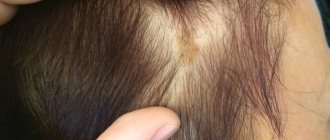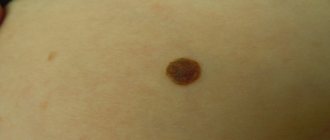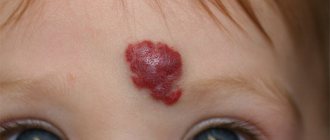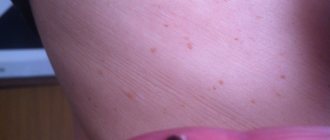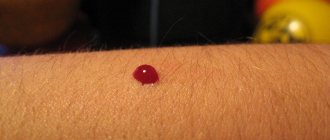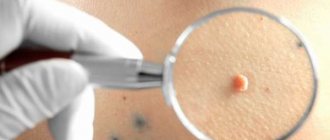A birthmark is a benign formation that is located in any area. By localization, one can determine the character, future and present of a person. A mole on the ear rarely appears. A location in such an area indicates that a person is not confident in himself, hides shortcomings, and has complexes. When difficulties arise in life, they close in on themselves and panic.
General meaning of moles
The types of birthmarks in the ear area are the same in women and men. In such areas appear:
- blue nevi;
- flat moles
- "wine stains";
- lentigo.
Convex formations on the ears are not dangerous if they do not cause discomfort.
Reasons for the appearance of marks:
- hereditary predisposition;
- a sharp increase in the number of nevi may be associated with problems of the endocrine system and organs of the gastrointestinal tract.
- influence of high doses of radioactive radiation.
A nevus on the ear means that the person is reckless, boastful and prone to deception. Sometimes God's mark signals extraordinary thinking and worldview. From a medical point of view, moles in the ears indicate metabolic problems and the presence of pathologies of the nervous system.
Birthmarks on the ears
Moles located in this place can be interpreted in different ways. To get the right answer, it is important to study their type and specific location. There are also general signs that explain the meaning of ringtones on the ears.
There is an opinion that the owner of a mole on the ear likes to embellish his achievements, knowledge, abilities and skills. He ignores the negative sides, but always notices them in others. The reason for this is the insecurity that he is afraid to show to others.
Closer to middle age, owners of such marks cope with their doubts. They begin to look at the world differently, which is why they often achieve great success. They are not afraid to openly express their, albeit not always popular, opinion.
If it was not possible to completely overcome fears and doubts by the age of 30, the vices will only get worse. Tendencies to steal and deceive may appear. Fortunately, owners of moles on the ears have good mental abilities. Therefore, most often they easily overcome their complexes.
Mole on left ear
A birthmark on the left ear indicates sociability and sociability. A person with such a mark is benevolent; if you do not conflict with him, he will not cause harm. Such people are often interested in magic and help others.
The meaning of the mark on the left ear.
- Good luck, success in creative endeavors. If the nevus is located in the cavity of the hearing organ, the person is lucky in any form of art.
- The pigmentation on the left earlobe indicates the mystery of the person. Such people are fond of everything secret; marks are usually present in sorcerers.
A person with a mole at the bottom of the ear is prone to intrigue and conspiracies, not necessarily of an evil nature.
Diagnostics
Prompt diagnosis of a malignant tumor can save lives; the key to successful treatment is a timely diagnosis and accurate determination of the stage of the disease.
Diagnosis begins with an examination of the patient, during which the time of occurrence of the nevus is determined, information about changes in its color, shape, size, and appearance.
If there are changes, their cause and approximate time of appearance are determined, as well as information about treatment, if any.
For more accurate diagnosis, the following methods are provided:
- smear (if there is bleeding or crack);
- epiluminescence microscopy;
- computer diagnostic method.
The last two methods are quite expensive, which makes it difficult for them to become widespread.
Mole on the right ear
A nevus in the right auditory organ, located at the apex, means mistrust.
- Such a person is suspicious of people, regardless of the presence of negative experiences in the past.
- He is shy, suffers from problems communicating with others, and is often lonely.
- The mark in the hollow of the right ear indicates a strong will. These people are often religious, are keen on spiritual teachings, and sometimes even lead their own movements.
- They are attentive to others, loving, and the life of the party.
- The point at the bottom of the right auditory organ signals the choleric temperament of its owner. Such a personality - explosive, somewhat extravagant - knows how to attract the attention of a company.
Safe moles
Those who have dark spots on their skin should be wary of their changes. In time, detected signs of degeneration into melanoma contribute to the timely removal of the formation and preservation of health. Safe moles are different:
- the presence of a stalk – it cannot be formed by malignant cells that grow randomly;
- long-term condition without changes.
Spots that appear shortly after birth are not considered dangerous. It is important that they are small in size. Good – non-dangerous – signs of neoplasms include:
- flesh tone;
- unchanged pattern of the skin of the nevus and adjacent tissues;
- soft consistency;
- hair on the surface of the neoplasm - growing from the skin, indicates the absence of pathologies;
- diameter no more than 5 mm;
- symmetry;
- nevus in the form of a spot.
Mole on earlobe
A nevus on the earlobe characterizes wealth and the desire for high achievements in a career. The interpretation does not change depending on the specific location of the spot in a given zone.
- Such a person is successful, luck in financial matters accompanies him throughout his life, and capital is easily accumulated.
- In his youth, he is prone to financial difficulties, which are easily resolved. The accumulation of considerable capital is accompanied by practicality, determination, and caution in relation to money.
- These people do not accept financial risks, make informed decisions, and do not like surprises.
Also, owners of a nevus on the earlobe suffer from a weak character, but not in relation to money matters. They are vulnerable to various diseases and have low protective properties of the body.
What does a mole on the ear mean for men and women: causes and danger of appearance
Moles are formations that appear on different parts of the body; in most cases, they do not cause inconvenience or problems to a person. Sometimes their owners don’t notice them. When a nevus appears on the organ of hearing - the ear, this is not a problem.
In rare cases, the formation causes a cosmetic defect. If a mole on the ear is in the way or is periodically injured, you should find a way to safely remove it.
Dermatologists recommend paying close attention to such phenomena, eliminating the risks of infection and the development of pathological processes within the formation.
The mechanism of the appearance of a mole on the ear
Many people experience the appearance of a birthmark on the ear. Pigmentation can be of completely different shapes and sizes. Such growths are benign in nature and do not cause concern.
Nevi can be congenital, this is influenced by genetic predisposition. Some formations arise during life. There are a number of factors influencing the appearance on the ear:
- prolonged and regular exposure to ultraviolet radiation. Strengthens the work of melanocytes, they produce melanin more actively and, as a result, new moles appear on the body;
- frequent visits to the solarium;
- regular injury to the skin of the ear;
- hormonal imbalance - observed in girls during puberty, in women during pregnancy, lactation, menopause.
Is it dangerous
The appearance of a nevus on the ear does not cause discomfort and is not a cause for panic. The formations are benign and do not threaten human health. Dermatologists recommend observing the mole, noting whether it is growing or not and what edges it has. In case of visible changes, it is better to undergo an examination, eliminating the risk of developing pathological processes.
It is worth remembering the possible degeneration of the formation into malignant. If a mole is often injured during combing or jewelry, this can cause malignancy of the formation. The danger comes from prolonged exposure to ultraviolet radiation and abuse of visits to the solarium.
Previous illnesses that negatively affect the hormonal balance of the body can trigger the process of malignancy. It takes time for a mole to develop into melanoma. The transformation can be stopped and prevented by timely contacting a specialist and strictly following his recommendations.
What does it mean on the earlobe
There are many folk signs associated with moles. It is believed that every mark on the body leaves an imprint on the character of a person. A mark that appears on the auricle indicates a high level of intelligence in a person and a propensity for creative activity.
On the right ear
- A tragus of the right ear with a mole indicates a person’s inability to trust others; it is difficult for him to establish contacts with others.
- The location on the left side indicates a tendency towards spiritual development, the ability to organize one’s own course.
- A mole on the lower earlobe is found in choleric people.
On the left ear
- A mark on the shell indicates diseases of the internal organs. You should undergo a full examination, paying attention to the gastrointestinal tract and central nervous system.
- A mole on the curl indicates a good character. A person does not take revenge even on offenders. There is a penchant for white magic.
- Pigmentation in the hollow of the ear promises success in creativity.
- The formation at the bottom of the lobe indicates a love of riddles and mysticism. The person is prone to intrigue and conspiracies.
N
Methods for safe nevus removal
The risk of a mole degenerating into a malignant tumor, constant injury becomes the reason for removal of the formation. It is strictly prohibited to carry out such manipulations on your own at home. A specialist in the hospital first conducts a series of necessary tests, identifying the type of nevus. After this, the optimal destruction method is selected.
- Laser removal is a safe, minimally invasive method of destruction. The advantage is a quick recovery period, painlessness, minimal risk of scarring after the procedure. On the other hand, there is a significant drawback - it is impossible to conduct a histological examination to establish the nature of the nevus. During the removal process, the tissue where the nevus was evaporates.
- Freezing with liquid nitrogen – cryodestruction. Impact on education by low temperatures. The disadvantage is the inability to control the depth of impact on the tissue. As a result, relapses are possible.
- Removing a mole using the radio wave method. The impact occurs with high frequency radio waves. The procedure does not have a negative effect on the body. The average duration of removal with the device is 20 minutes. The advantage is painlessness and no bleeding. Healthy tissues located above, below, above and below the formation are not damaged. The risk of scarring after the procedure is eliminated. Another advantage is the possibility of conducting histological examination and a short rehabilitation period.
- Electrocoagulation. Removal occurs due to the effect of high-frequency current on the nevus. The procedure is performed under local anesthesia. It is painless and there is no blood loss. The risk of developing infection afterwards is minimized. The rehabilitation period takes up to 10 days.
- Surgical removal. Using a scalpel, the specialist excises the formation, capturing healthy tissue. This eliminates the risk of relapse and malignancy. The manipulation requires a longer recovery period, and scars may remain. The advantage is the ability to conduct a histological examination of tissue after the procedure, determining the nature of the nevus.
Each method has a number of advantages and disadvantages.
For the rehabilitation period to be successful, you need regular treatment with an antiseptic and compliance with the doctor’s recommendations for wound care.
Can I get my ears pierced if I have a mole?
Women and men make the decision to pierce their ears for personal reasons. Some people want to emphasize their individuality with piercings, others consider it feminine. Before carrying out the procedure, you should make sure that there are no moles at the site of the intended puncture (side, back).
Injury to a nevus can trigger the onset of a pathological process. The risk of infection increases when the procedure is carried out at home without following the necessary rules of hygiene and disinfection.
If you have a mole, you should first consult your doctor. In most cases, experts do not recommend ear piercing; there is a risk of injury to the formation.
What symptoms should you see a doctor for?
Moles are a type of benign formation, but under the influence of certain factors the risk of their malignancy increases.
In the absence of unpleasant symptoms, there is no cause for concern.
You should consult a doctor when:
- education began to grow rapidly;
- symmetrical outlines were lost, the edges became uneven, “torn”;
- the nevus suddenly changed color;
- a mole on the ear begins to itch, itch periodically or regularly;
- pain appeared;
- there is bloody, bloody discharge from the nevus;
- the surface became heterogeneous and rough.
In some cases, redness of the skin around the skin lesion may be observed. The combination of such symptoms may be a symptom of degeneration and requires specialist supervision.
Moles on the temples, shoulders, and ears are not dangerous in most cases. Such formations require careful monitoring. If the nevus on the ear begins to bother you, an injury has occurred, or the question of piercing has arisen, you should consult a doctor. If necessary, it is better to remove the formation, protecting yourself from possible negative consequences.
Link to main publication
articles:
Loading…
Didn't find suitable advice?
or see all questions...
Source: https://ProMelanin.ru/rodinki/na-uhe.html
Mole behind the ear
A nevus behind the hearing organ means the presence of hidden character traits.
- Such a person is characterized by duplicity; it is impossible to unravel him even after many years of communication. They are deceitful, hypocritical, frivolous.
- In relationships with the opposite sex, they tend to self-flagellate and blame only themselves for failures.
- They often think about suicide, easily engage in adventures, commit rash acts, easily offend others, but they do not tolerate such an attitude towards themselves.
Everything depends on a person’s nature, and signs are general in nature. The main thing is that moles do not cause health problems.
Reasons for appearance
The number of birthmarks increases significantly with age. People are not only interested in what they mean. And also why they appear at all. Here are the main reasons:
There are several types of nevi. Their classification is important not only for medicine, but also for morphoscopy. Main types of moles:
- Flat. Formed in the top layer of skin. Most often such a mole is found on the ear.
- Hemangioma. Refers to vascular formations, has a burgundy or red color.
- Convex. The most dangerous species. Due to the fact that the formation rises above the surface of the skin, there is a high probability of injury (contact with clothing, a hard washcloth). It is this type that most often degenerates into a malignant formation.
- Congenital. Morphoscopy revealed an amazing pattern - a mole on the right ear, in the vast majority of cases, is congenital. The biological mechanism of this phenomenon is unclear.
What to look for: signs of cancer
Moles can develop into a dangerous type of cancer – melanoma. There are features that are important to pay attention to. They indicate the cancerous degeneration of nevi and accompany the growth of the formation.
- Melanoma pigmentation always has an ulcerative surface, fluid is constantly secreted, and it bleeds.
- Malignant moles have blue, dark purple, bright red, black, and orange shades.
- The mole is constantly growing, rising, and changing. Exudate of various colors is released from it, which has not been noted before.
- Pain on palpation. A birthmark or acquired spot peels off and itches.
- Pigmentation exceeds 6 mm, branches out to the sides.
- The boundaries of education are unclear and torn. When comparing two moles, it is clear that they do not correspond to each other.
A birthmark can also degenerate into an atypical one. It is necessary to consider the conditions under which it began to change in size. The first step is to distinguish dangerous formation from dysplastic pigmentation:
- size ranges from 6 to 12 mm in diameter;
- the presence of two or more shades;
- the surface peels off and has a heterogeneous appearance;
- develops even after 35 years.
It is impossible to identify the problem on your own, because... Certain studies are required to establish a diagnosis.
Important! There are non-melanoma types of oncology - basal cell carcinoma and squamous carcinoma. These types of cancer develop slowly; if detected early, they do not have time to spread to other tissues and can be successfully treated.
Degeneration of a mole
First of all, the degeneration of a mole is dangerous because it can lead to the development of cancer.
In the course of numerous studies and observations, it can be concluded that moles that appeared on the body during life are at greater risk of degenerating into melanoma.
Often, the average person mistakes raised moles for a potentially dangerous nevus, but in reality, moles on the soles and palms pose the greatest danger, among them the largest percentage of cancer-predisposed neoplasms.
Moles, which are often susceptible to mechanical damage and friction, are also at risk. And yet, size matters, at least large moles are most prone to melanoma.
The first and main symptom of the onset of degeneration of a mole is its obvious increase in size. Further, according to the symptoms, you can observe the thickening of the mole tissue and a change in color. Itching and sometimes bleeding from cracks in a mole should also not be ignored. You can check a mole that is bothering you for the risk of cancer with our online test, and you can check the susceptibility of your skin type to the development of melanoma with another online test.
Simple prevention of moles:
- We check the symmetry of large nevi;
- A degenerated mole always has jagged contours;
- Observe the color of moles;
- We monitor the growth of especially large moles;
- At least once a year we are examined by an oncologist and a dermatologist.
When is mole removal required?
You should get rid of nevi only after consulting a dermatologist. Based on a detailed examination, the specialist determines the type of pigmentation and selects the appropriate removal method. After surgery, the excised tissue is sent for histological and cytological examination to determine the presence of oncological processes. If the mole does not bother you, the spot is of insignificant size, then the chance of it turning into an oncological formation is minimal.
Causes of degeneration of nevi:
- genetic determination;
- injuries;
- regular sun exposure.
Sometimes moles are removed for aesthetic purposes if they bother a person in terms of appearance.
When is nevus excision necessary:
- rapid increase in size of the mole;
- change in shade, structure;
- hair loss at the site of pigmentation;
- inflammation, peeling, cracks in the nevus or nearby tissues.
When a person has a large number of moles on the body larger than 1 centimeter in size, their removal is not necessary, but constant monitoring by an oncologist is necessary. In older people, pendulous nevi often form; they should be excised, since the process of the formation of moles should end during puberty. All spots that appear in adulthood are potentially dangerous.
Why do moles grow?
One of the signs of degeneration is an increase in the size of a mole on the body, head or face. If a mole begins to grow, this does not mean that melanoma (skin cancer) has appeared. The reason for the growth may be different, although it is possible that it will give impetus to a serious illness.
- External damage to papillomas and birthmarks. Microtraumas can be caused by shaving, hair removal, combing, and constant friction. Damage to a red mole is especially dangerous: it not only provokes its growth, but is also fraught with severe bleeding.
- Ultraviolet radiation, radiation. Prolonged exposure to the open sun or in a solarium is a common cause of rapid growth of melanocytes (pigmented cells). A brown or black mole increases in size.
- Fluctuations in hormonal levels. It happens that a mole begins to increase during puberty or during pregnancy. It happens that with hormonal surges, a mole on the body becomes smaller or disappears completely.
- Heredity. Often birthmarks in children are found where their ancestors had them. Even the shape and size of the nevus can be duplicated.
What to do if a mole starts to grow. Signs of melanoma
What to do if a mole changes color, grows quickly and itches, and pain is periodically felt in it? If such signs appear or the nevus is damaged, medical consultation is required. Only a doctor can determine whether it is melanoma and decide whether to remove the mole. If you do not respond to alarming symptoms in time, the tumor grows into adjacent tissues and metastasizes through the blood and lymph.
The cause of the tumor is the accumulation of excess melanin (pigment) in moles. At the same time, the color, density, and outline of the mole quickly change. Melanoma, unlike a harmless nevus, has the following characteristic features:
- gradual increase in size;
- a change in color does not necessarily mean darkening; a black mole may become lighter during degeneration;
- the appearance of a glossy shine;
- hair loss (if they grew on the surface of the nevus);
- distortion of shape, asymmetry - the borders become uneven, the edges become jagged;
- change in structure - compaction, appearance of cracks, crusts, ulcers (sometimes with bleeding);
- itching, pain.
It is advisable to consult a specialist in the following situations:
- new moles grow rapidly;
- there is a red convex mole;
- The mole is located under the arms, on the palms, feet, neck, head, inner thighs - where pressure, friction, cuts, and exposure to chemicals are possible.
The question is often asked whether it is necessary to rush to the clinic if, of all the listed symptoms, only itching is noted. If a mole itches, first examine it (either on your own or with the help of loved ones). Uniformly colored nevi with a size of no more than 5 mm, without signs of inflammation, are considered harmless. Within 5-7 days, you can try to eliminate the itching yourself using these techniques.
- Wipe with an aqueous solution of vinegar.
- If the skin next to the mole itches, lubricate it with moisturizer.
- If you have a possible allergy, use antihistamine ointment, take a Dazolin or Suprastin tablet.
- If a mole becomes red (a sign of infection), treat it with alcohol or calendula tincture; if there is an injury, cauterize it with iodine.
If, despite the measures taken, the nevus still itches, you should go to a specialist.
Which doctor should I contact?
If a mole is detected, contact a dermatologist. The doctor conducts a visual examination and a number of diagnostic measures. If the nevus does not grow, the dermatologist prescribes drug therapy. If the formation progresses, the doctor prescribes consultations with the following doctors:
- surgeon;
- therapist;
- oncologist;
- pathologist;
- radiation oncologist.
The effectiveness of therapy depends on the close cooperation of many specialists.
Important! Since the causes of the spots have not been established, therapy is only symptomatic. As a person grows up, most of them disappear. Dermatologists do not recommend getting rid of tumors in childhood; such interventions result in complications.
What dangerous moles look like
What do nevi that are subject to pathological changes look like? Only a doctor can correctly distinguish between non-dangerous tumors. Dangerous formations look like this:
- blue – seals under the skin with clear boundaries, with dimensions no more than 10 mm;
- nodal – round, flat in shape, color – brown, black;
- skin – often pale, convex;
- halo nevus - pigment surrounded by a light or white rim;
- Spitz - looks like a dome-shaped tumor of pink shades, with the possible presence of a hole through which blood and fluid leaks;
- connective - connect individual formations into a whole.
Mole with jagged edges
One of the signs of a non-hazardous formation turning into a dangerous one is a change in contours. It often has blurred edges and scalloped borders. There are non-dangerous types of nevi - dysplastic. Only a specialist can make a correct diagnosis. A mole with uneven edges can be dangerous if there are additional signs of melanoma:
- accelerated changes in size;
- the presence of clearly defined asymmetry;
- the appearance of highly indented boundaries.
Rough mole
Such a neoplasm is harmless if its diameter is no more than 5 mm and remains constant in size. Often its appearance signals a lack of vitamins and nutritional disorders. Doctors advise coming for a consultation if it is discovered that:
- the smooth nevus turned into a rough one;
- bothered by burning, itching, tingling;
- irregularities and compactions appeared in the middle;
- areas with different shades formed;
- diameter has increased significantly.
A dangerous rough mole requires immediate examination if:
- the appearance of bleeding;
- development of the inflammatory process;
- rapid change in size;
- formation of asymmetry;
- formation of purulent discharge;
- the occurrence of painful sensations when touched;
- the emergence of an irregular shape, blurred boundaries, along the edges of the neoplasm.
Large moles
Large formations on the skin are pigment spots. When they remain unchanged and do not cause inconvenience, this is not a dangerous phenomenon. It is important to constantly monitor their appearance, color, and size. To eliminate worries, you need to consult a dermatologist. During the visit, the specialist will conduct a diagnosis and give a forecast of the risk of developing a malignant neoplasm. Large moles become dangerous if they:
- injured;
- thickened;
- started to itch;
- were unsuccessfully removed independently;
- changed in size, shape;
- are bleeding.
Skin care after mole removal
After excision of a nevus, you need to adhere to a number of rules:
- for 4 weeks do not visit the solarium, do not sunbathe in the sun to avoid hyperpigmentation;
- for 2 weeks you should not go to the sauna or swimming pool in order to reduce the risk of secondary infection;
- 3-5 days after removal, stop drinking alcohol, since alcohol dilates blood vessels and increases the risk of bleeding;
- do not scratch the area involved in the procedure.
After 2-3 weeks, there will be no excavation at the site of removal of the birthmark; there will be a slight pigment spot, which completely disappears after 5 months from the moment of excision. The place where the nevus was will take on a light shade.
Treatment
Drug therapy is not provided in this case due to low effectiveness in the presence of mature tumors. Drugs are prescribed if moles arise against the background of other diseases; treatment of nevi directly involves surgical intervention.
Surgical removal
Treatment of the tumor involves surgical removal, which can be prescribed for medical reasons (malignant neoplasm) or for aesthetic purposes.
Removing a benign tumor is not difficult and can even be done in a cosmetologist’s office. A malignant neoplasm can be removed only after consultation with an oncologist.
Types of operations:
- excision of tissue using a scalpel; during the operation, overgrown pigment cells and the area of skin located nearby are removed;
- cryodestruction - during the procedure, tissue is frozen, as a result of which the process of cell division stops and they die, frozen tissue is removed;
- the laser method is considered the most common; a laser is used to evaporate the liquid, as a result of which the neoplasm cells die;
- electrocoagulation is a method similar to laser, during which cells are destroyed under the influence of current, most often the method is used to remove small tumors.
Folk remedies
Treatment with traditional methods is carried out after a mandatory visit to a dermatologist and oncologist, which makes it possible to determine the type of neoplasm. Neglecting traditional therapy can aggravate the patient's condition and pose a threat to his life.
Traditional recipes:
- Cauterize the nevus with lapis 1-2 times a day until the size of the tumor decreases. If there is no effect within 2-3 weeks, it is necessary to switch to other methods.
- Celandine juice is applied in a thin layer to the mole several times a day; to slow down the evaporation process and add viscosity, the product is sometimes mixed with petroleum jelly.
- 70-80% vinegar essence is used to cauterize the nevus, the procedure is carried out once a day, to avoid infection, the treated area is bandaged.
- Lubricating the mole 3-4 times a day with hemp oil, the action of the product is based on the evaporation effect.
- Lubricate the nevus with lemon juice 4-5 times daily.
The effectiveness of traditional methods is 10-15%; the disadvantage of using concentrated acids is considered to be tissue injury and a high probability of infection.
